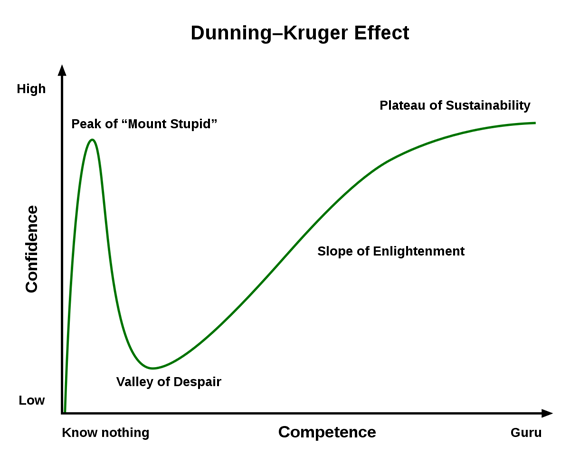3 min read
Education Vs Inspiration: How To Create A Balanced CPD Programme
![]() Paul Iddon
:
17-Sep-2021 11:00:00
Paul Iddon
:
17-Sep-2021 11:00:00

To an architect, a CPD can be like a bag of Revels. You never know what you’re going to get…
A post written by architect and friend of Insynth, Paul Iddon ARB RIBA
A couple of years before the pandemic, I researched construction product manufacturing with sales and specification teams. I asked them to describe in single words what immediately came to mind when thinking about their communication with architects.
I must admit to chuckling at some of the responses. They were either unfailingly polite or fantastic examples of passive aggression. Words like ‘challenging’, ‘interesting’, or my favourite – ‘intense’. I’m seriously considering a series of TikTok videos based on just this topic.
I get it. I do.

I am a card-carrying, fully paid-up member of both the RIBA and ARB, having spent over 22 years training and practising as an architect. So, I am in a position to know. There are no two ways about it; we can be a difficult bunch. I covered some of this in a recent blog on emotion vs rationality. I discussed the unusual results from a piece of research in the USA based on the Myers Briggs Personality Inventory. I plan to cover this are more on future blogs, so keep reading!
One of the most frequent comments I hear from manufacturers is ‘why are architects unenthusiastic about our CPD’s?’. It is usually a bit blunter than that, occasionally with some impressive adjectives thrown in to entirely convey their feelings on the subject.
One of the great mysteries in life is why we often resist helpful knowledge or even ignore it. We are all subject to types of bias that can seriously hold us back: confirmation, in-group, anchoring, availability, and the Dunning-Kruger Effect, to name a few. The latter being quite pernicious in highly educated people in that we think we know more than we do on many subjects.
 Architects design projects that will be built from product systems. It is extremely rare nowadays to detail window components, staircases, stonemasonry, etc. We rely on specialists in cladding, window, and roofing systems in synthesizing a building design. We also rely on these same specialists to understand building regulation clauses and the subtle nuances of the relevant standards.
Architects design projects that will be built from product systems. It is extremely rare nowadays to detail window components, staircases, stonemasonry, etc. We rely on specialists in cladding, window, and roofing systems in synthesizing a building design. We also rely on these same specialists to understand building regulation clauses and the subtle nuances of the relevant standards.
A great way to ensure you have enough knowledge to be able to design effectively and even create something unique is through CPD. In my experience, these tend to fall into five main categories:
- Product lists – basically brochures in PowerPoint format.
- Product inspiration – a bit of (1) with good case studies/examples.
- Product contextual knowledge – genuine learning about the regulatory context, usually with a bit of (1) and (2).
- A bit of all the above – ‘the pick and mix’
- RIBA Certified/assessed CPD – almost exclusively (3) with very limited brand/product information.
(By the way, in my experience, most architects only pay attention to CPD’s certified/assessed by RIBA. They don’t care about any other certification systems).
One of the main reasons architects resist CPD’s is because they have seen far too many (1) and (2) as above. CPD’s are primarily sales tools, and it is not unusual that many are therefore written by or for the sales team. This is where biases raise their head again. It should be no surprise that the possible unconscious focus is to sell products by demonstrating their utility, attractiveness and benefits to the architect, contractor, and end-user.
 Most of us will have eaten Revels. But those tasty chocolate treats can often be divisive or even polarising. Passions can run high because they are a bit like a budget version of Forrest Gump’s famous dictum about ‘life being like a box of chocolates, you never know what you’re going to get. Let’s take Forrest at his word and ignore for a moment the massive plot hole that every box of chocolates always comes with a list of contents (why does no one ever comment on this?).
Most of us will have eaten Revels. But those tasty chocolate treats can often be divisive or even polarising. Passions can run high because they are a bit like a budget version of Forrest Gump’s famous dictum about ‘life being like a box of chocolates, you never know what you’re going to get. Let’s take Forrest at his word and ignore for a moment the massive plot hole that every box of chocolates always comes with a list of contents (why does no one ever comment on this?).
The trouble usually starts with the globular ones. It is very difficult to know whether you’re ‘gonna get’ the orange, toffee, coconut, malted centre, or coffee cream.
I think this is an apt analogy because opinions on favourites may differ, but we all can say which one we definitely don’t like and avoid. That’s OK. We can still enjoy the rest of the assortment.
CPD’s are like Revels. It is unreasonable to expect everyone to like or enjoy every presentation. Architects know statistically that they will come across ones they don’t like. We will all find one we don’t get on with – in my case – the filling removing toffee centre.
Revels still sell because it’s the variety that matters, even the slight element of ‘rolling the flavour dice’ and accepting what that fate has in store for us.
So, mix up your assortment, don’t make them all the same and ensure you inspire and educate in equal measure.
Variety is vital because if there are no surprises, you’ve created M&M’s.
Paul Iddon ARB RIBA.
About Insynth
At Insynth we deliver a predictable flow of leads, customers, and specifications for building product brands through our inbound marketing approach, proven to reach a technically demanding audience.
We use the latest marketing techniques such as construction inbound marketing, to equip building product companies to grow sustainability in this era of digital transformation.
As the only HubSpot certified agency to major in construction marketing. We have a proven formula of bringing a variety of functionalities together including CRM Implementation, Web Design, Sales Automation, SEO, and Email Marketing to achieve your ultimate aim: Growing your business and gaining new specifiers and customers.
Book A Free Consultation Today
